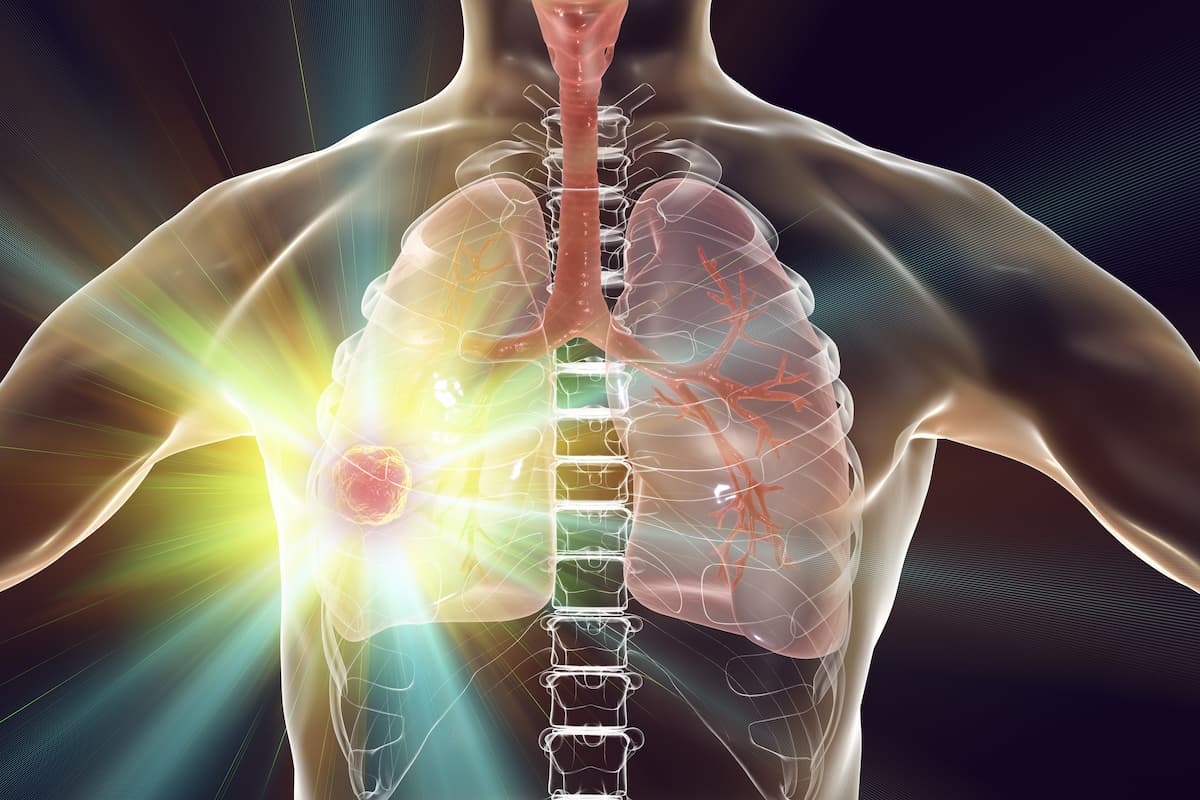SHP2/KRAS Inhibitor Combo Yields Activity in KRAS G12C+ Solid Tumors
Investigators of the phase 1b/2 KontRASt-01 trial will continue their evaluation of TNO155 plus JDQ433 in KRAS G12C-mutated solid tumors as part of an expansion portion of the trial.
Investigators hypothesized that adding TNO155 to JDQ433 can improve outcomes in patients with KRAS G12C solid tumors. The combination is thought to enhance target engagement through the shift of moving KRAS to the inactive state, as well as with the inhibition of pathway reactivation, as SHP2 inhibition suppresses feedback activation of wild-type KRAS, NRAS, and HRAS after KRAS G12C inhibition.

Combining SHP2 inhibitor TNO155 with JDQ433, a KRAS G12C inhibitor, resulted in in anti-tumor activity and tolerability in patients with KRAS G12C-mutated solid tumors like non–small cell lung cancer (NSCLC), according to data from the phase 1b/2 KontRASt-01 trial presented at the 2023 World Conference on Lung Cancer (WCLC).
Findings showed that, in the group of patients with NSCLC who had been treated with a KRAS G12C inhibitor, (n = 12), the objective response rate (ORR) was 33.3% (90% CI, 12.3%-60.9%). A total 8.3% of patients had a complete response (CR), 25.0% experienced a partial response (PR), 33.3% had stable disease (SD), and 33.3% of patient had progressive disease (PD). The disease control rate (DCR) was 66.7% (90% CI, 39.1%-87.7%).
In a KRAS G12C inhibitor–naïve group of patients with NSCLC (n = 12), 33.3% of patients experienced a PR, which was also the ORR (90% CI, 12.3-60.9); 50% had SD, and 16.7% of patient responses were listed as unknown. The DCR was 83.3% (90% CI, 56.2%-97.0%).
Regarding safety, common adverse events (AEs) that were grade 1/2 were aspartate aminotransferase (AST; 14%) of patients and increased alanine aminotransferase (ALT; 10%); grade 3 or higher increased ALT was seen in 2% of patients. Ultimately, it was determined that continuous JDQ443 at 200 mg twice daily with TNO155 at 10 mg twice daily for 2 weeks on and 1 week off was determined to be the optimal dosing schedule for the expansion regimen of the combination.
Investigators hypothesized that adding TNO155 to JDQ433 can improve outcomes in patients with KRASG12C solid tumors. The combination is thought to enhance target engagement through the shift of moving KRAS to the inactive state, as well as with the inhibition of pathway reactivation, as SHP2 inhibition suppresses feedback activation of wild-type KRAS, NRAS, and HRAS after KRAS G12C inhibition.
In the initial escalation portion of the phase 1b/2 study, investigations examined the preliminary safety and efficacy of TNO155 combined with JDQ433 in this patient population.
JDQ433 was given with TNO155 at the following dose levels: 200 mg and 20 mg once daily respectfully (n = 12), JDQ433 at 100 mg twice daily and TNO155 at 20 mg once daily (n = 6), 200 mg twice daily with 10 mg twice daily (n = 15), 200 mg twice daily plus 15 mg twice daily (n = 4), 200 mg twice daily plus 20 mg twice daily (n = 9), all on a 2 weeks on/1 week off schedule; there was also a regimen of 200 mg of JDQ443 twice daily plus 10 mg of TNO155 twice daily continuously (n = 4) for 2 weeks on and 1 week off.
Fifty patients were pooled, with 48% of patients (n = 24) had NSCLC and 52% were reported as having other tumors. The median number of prior lines of therapy was 3 (range, 1-9). Moreover, 50% of patients with NSCLC had previously received a KRAS G12C inhibitor vs 34% of patients in the overall patient population.
In a clinical case shared in a presentation of the data, investigators highlighted the case of a 73-year-old female who is enrolled on the trial with stage IV, KRAS G12C–mutant NSCLC and the comutations in PIK3CA, H1047R/TP53, and W53. This patient received 3 prior lines of therapy, including frontline treatment of cisplatin, pemetrexed, and pembrolizumab (Keytruda) for 14 months, 4 months of sotorasib (Lumakras), and 2 months of docetaxel, all of which were discontinued due to disease progression.
Notably, the patient began treatment on the study 4 months following completion of sotorasib treatment. It was found that the patient had a confirmed PR rate of 51.6% and a progression-free survival of 9 months, with an ongoing clinical benefit for 12 months at the data cutoff for this investigation.
Additional safety findings showed that in a pool of all observed patients, 88% reported any-grade treatment-related adverse effects (TRAEs) and grade 3 or higher TRAEs were reported in 36%. All-grade AEs included peripheral edema (40%), neutropenia (30%), thrombocytopenia (28%), diarrhea (26%), anemia (24%), fatigue (18%), and increased blood creatine phosphokinase (16%), respectively. Grade 3 or higher TRAEs were neutropenia (14%), thrombocytopenia (8%), diarrhea (2%), anemia (8%), and increased blood creatine phosphokinase (2%). Notably, no cases of pneumonitis were observed at any dose level.
Based on these safety and efficacy data with the combination, ongoing investigations with the regimen will be examined in an expansion portion of the study, which is now enrolling.
Reference
Negrao MV, Cassier P, Solomon B, et al. KontRASt-01: preliminary safety and efficacy of JDQ443 + TNO155 in patients with advanced, KRAS G12C-mutated solid tumors. Presented at: International Association for the Study of Lung Cancer 2023 World Conference on Lung Cancer; September 9-12, 2023; Singapore. Abstract MA06.03.